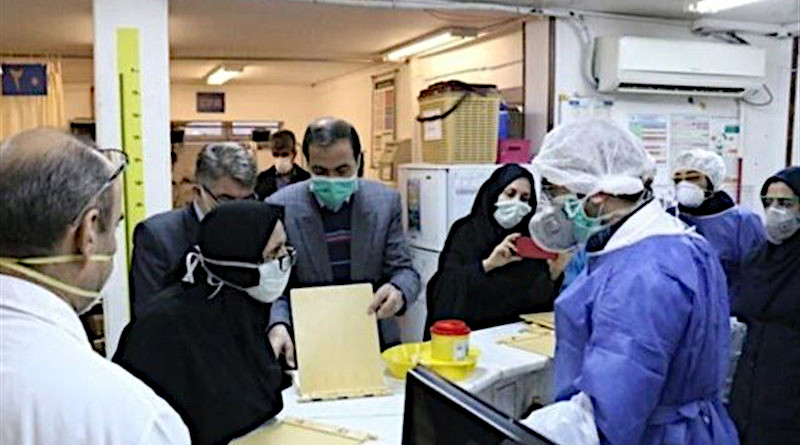Iran: Nurses, Victims Of Ruling Mullahs – OpEd
By Hossein Beizayi
In most countries, nurses are the largest group of healthcare professionals that provide direct and indirect care to patients in a variety of health settings and for a variety of health matters. The quality of care offered by the nurses is strongly linked to their performance, and shortages of nursing staff cause suffering and diminished patient care. In 2008, it was estimated that there were slightly more than 90,000 nurses in Iran, but healthcare facilities needed approximately 220,000 nurses in order to deliver optimal nursing care.
Nursing is a high-risk and harmful job. In general, nurses are often exposed to stresses such as abnormal mental and physical conditions during their shifts; infection with pathogens and viruses such as Coronavirus, hepatitis, and AIDS; and exposure to radiation and carcinogens. Their job is completely different from that of an employee sitting at a desk.
According to Iraj Harirchi, Iran’s previous deputy health minister, “For every 1,000 Iranians, there are only 1.6 general practitioners, dentists, and specialists, while the minimum ratio needed to meet the country’s demand is 2.5 doctors per 1,000 people,”
With the World Health Organization setting its sustainable development goal (SDG) for healthcare coverage at “4.45 doctors, nurses and midwives per 1,000 population” by 2030, Iran has a lot of catching up to do.
Even before the coronavirus pandemic that brought unprecedented challenges to Iran’s healthcare system, the country was already having trouble retaining its medical professionals.
On May 5, the state-run Jahan-e-Sanat Newspaper quoted Mohammad Sharifi Moghaddam, Secretary-General of Nurses’ Home, as saying: “With the outbreak of the Coronavirus and the suffering Iran’s nurses have endured due to the situation, between 100 and 150 nurses leave the country every month. Nurses, especially during the Coronavirus pandemic, receive high salaries and good benefits in European countries.”
Dr. Armin Zareian, Chairman of the Board of Directors of the Nursing Organization, announced on April 11 that 500 nurses per month were emigrating to North American and European countries
Furthermore, In Middle Eastern countries, on average, some 25 percent of the region’s population has been vaccinated. If the Iranian regime continues to vaccinate its people at the current rate, the vaccination program will continue for years. A government official acknowledged that 80% of Iran’s nurses employed in public hospitals have not yet been vaccinated.
Dismal working conditions of nurses in Iran and lack of new nurses
Mohammad Mirzabeigi, the head of the Iranian Nursing Organization, spoke about the severe shortage of nurses at a time when all cities in Iran were in the red zone, adding that nurses are in a very difficult situation. On the one hand, they have had a significant increase in workload; on the other, “100,000 nurses were infected by COVID-19”, and at least 130 nurses have died of it. The official described the shortage of nurses as “severe and chronic”.
According to the statistics he referred to, over the past three years (2018 to 2021), about 16,000 people in the nursing sector have retired without replacement. This means that the ratio of nurse-to-bed and population is constantly decreasing while nurses’ overtime hours are increasing exponentially. In fact, in today’s situation, a nurse must carry the burden of at least four others in Iran. Despite such alarming statistics, the Iranian government has done nothing to improve their job conditions. At times, the government has hired temporary and short-term nurses to replace the ones with seniority to save money and, of course, at the expense of people’s lives.
Unlike most countries where nurses and medical practitioners are considered a valuable resource and an investment, in Iran, nurses and medical practitioners are treated poorly. In recent months, several cities across Iran witnessed protest gatherings by nurses, demanding fair and safe job conditions, better pay, compensation, and job security.
Having the above in mind, it is very clear that the living and working conditions of Iran’s nurses will continue to deteriorate in the coming weeks and months, and more nurses will opt to offer their services in other countries. This will exert more pressure on Iran’s already fragile medical system and, most probably, more waiting in hospital and clinic waiting rooms for the ordinary citizens of Iran. One cannot blame Iranian nurses who have chosen to continue their careers beyond their country’s borders. The regime of the Ayatollahs is the sole and primary reason for the misery of Iran’s nurses in particular and the people of Iran, in general.

